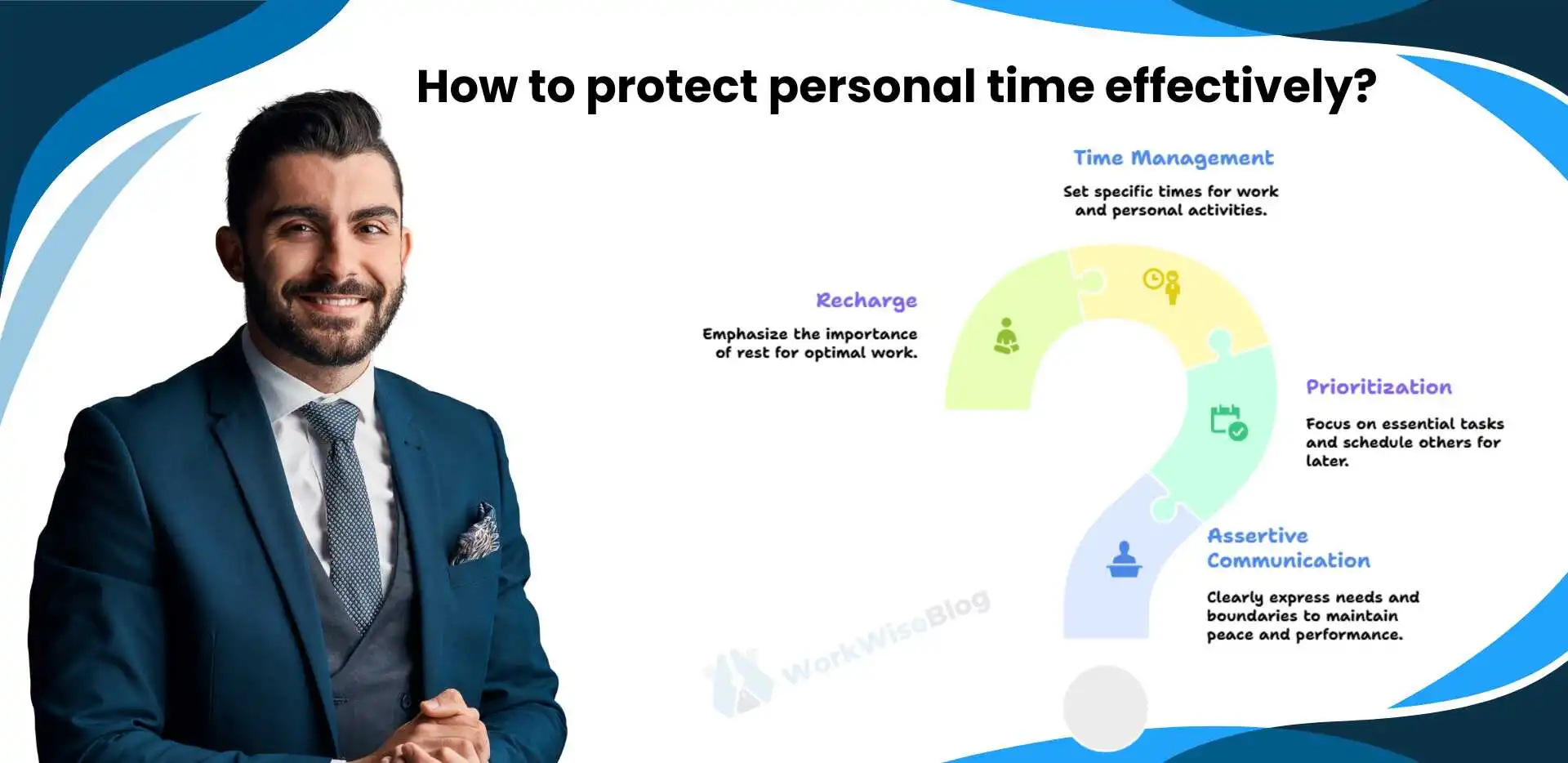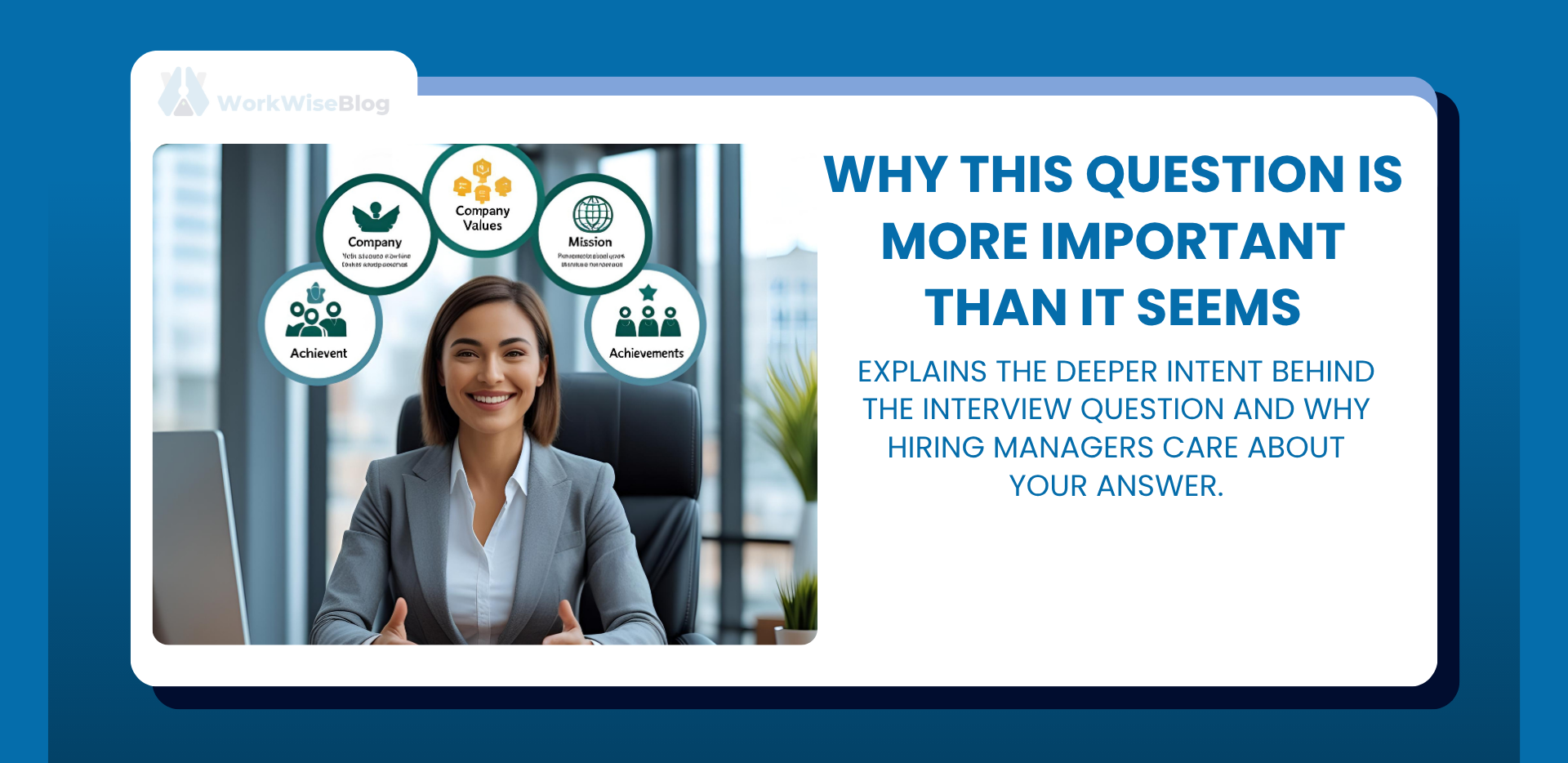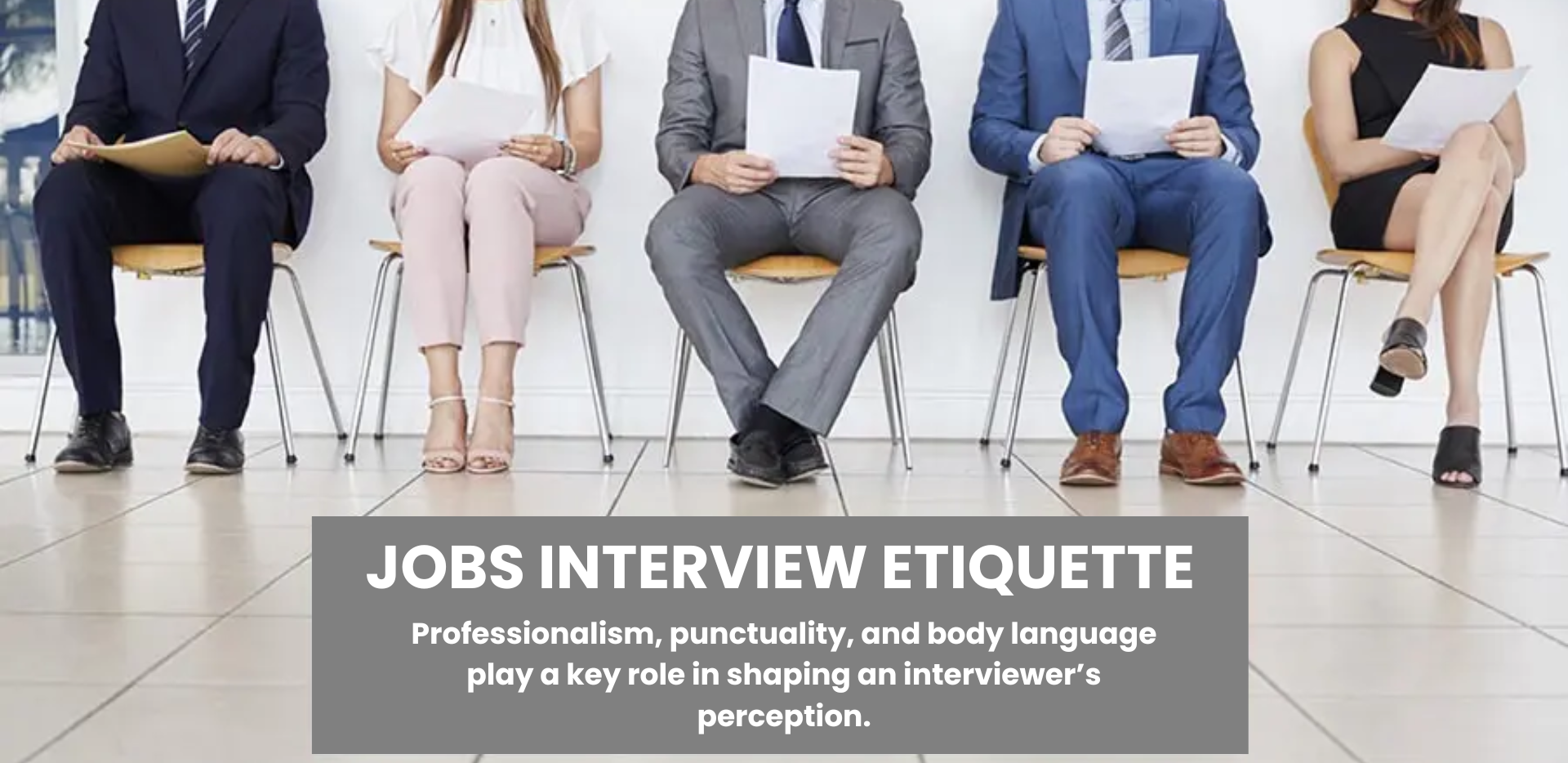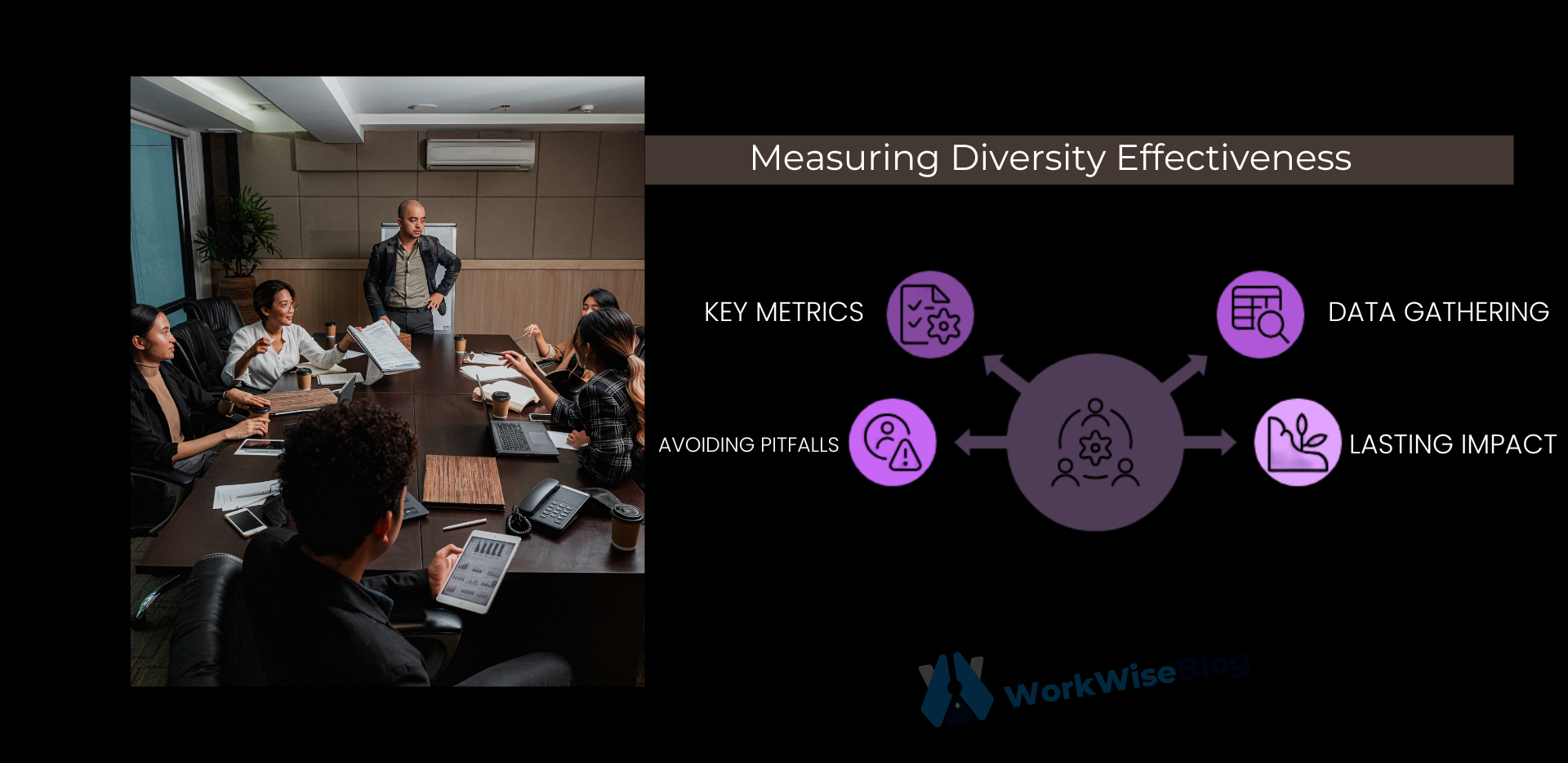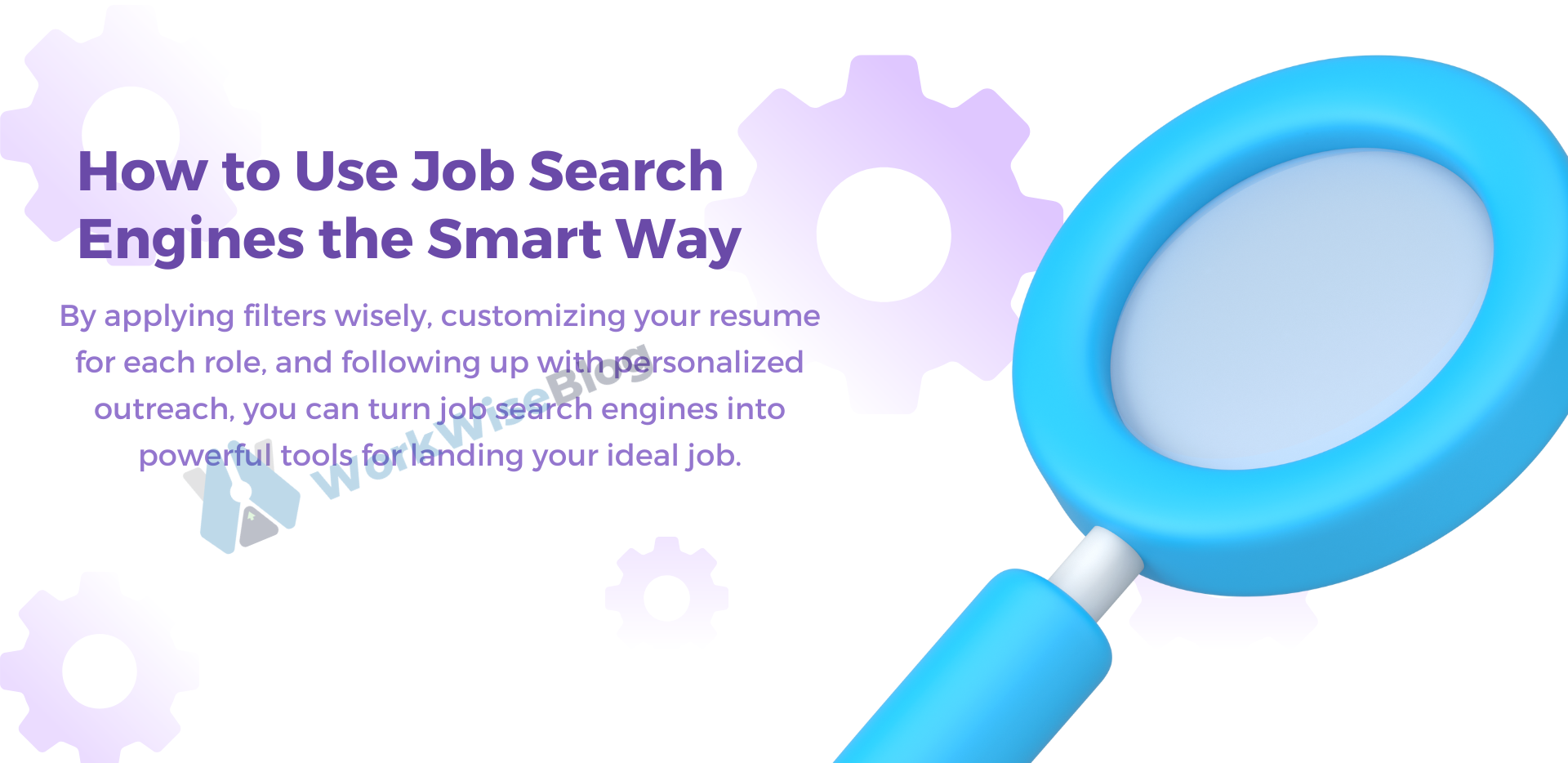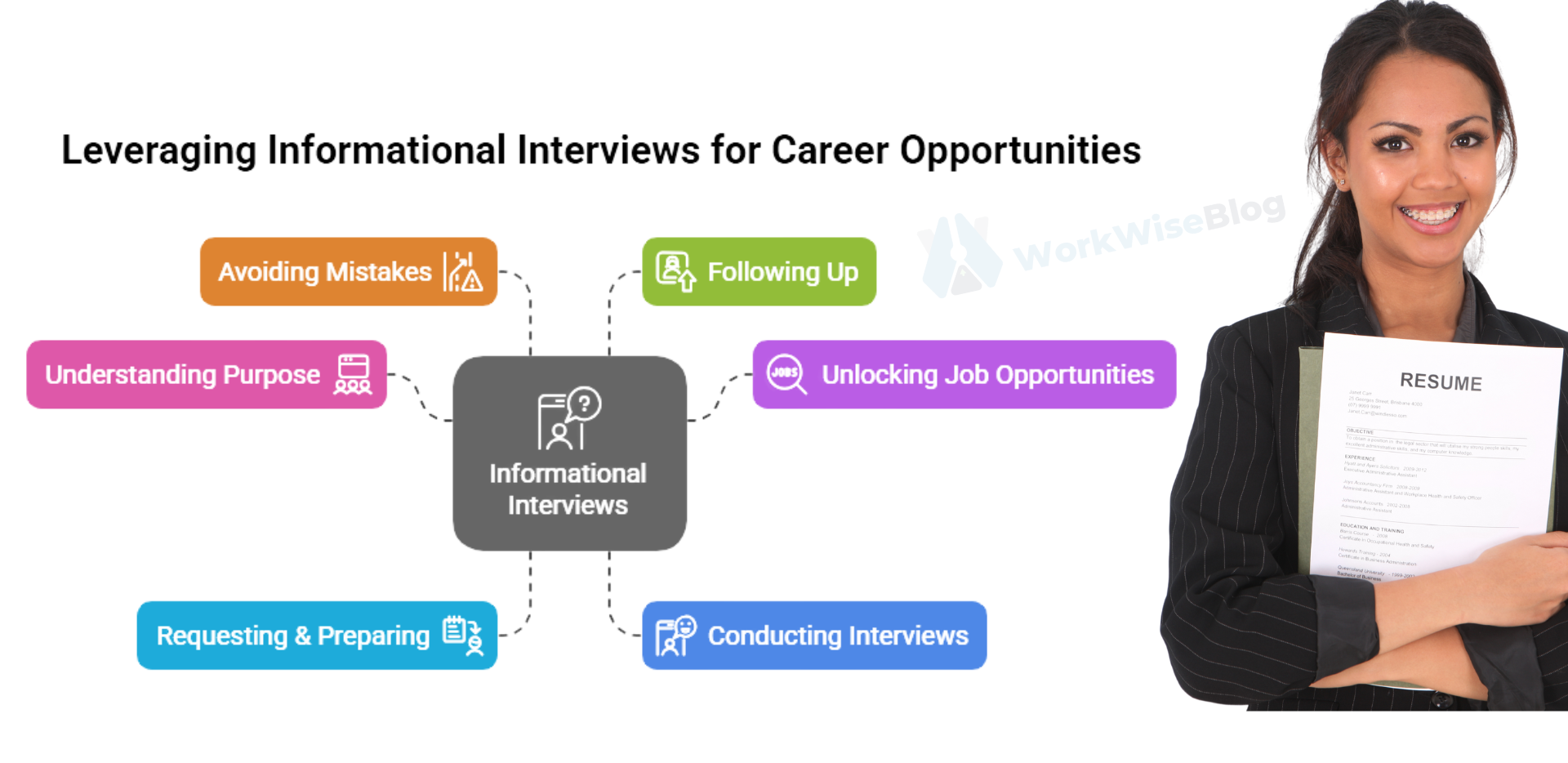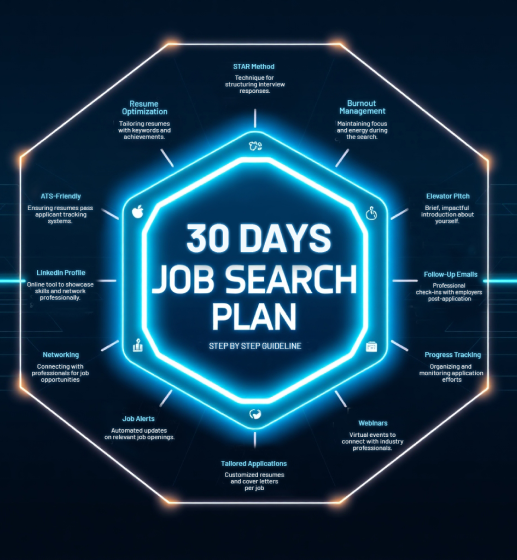
Why a 30-Day Job Search Plan Succeeds
A job searching plan specifically targeted towards the needs of the individual keeps you on track and focused. This 30-day plan will help you create a professional profile, expand your network, and apply to jobs with confidence.

Week 1:
Build a Strong Foundation
Day 1-2:
Update and Optimize Your Resume
Why It Matters:
A well-crafted resume tailored to your desired job role will pass ATS screenings and impress hiring managers.
Action Steps:
- Customize for Your Industry: Customize your resume according to the keywords and skills that the industry requires.
- Quantified Achievements: Use measurement-based descriptions instead of vague descriptions. For example, “Increased sales by 20%.
- Use Simple Formatting: An ATS-friendly format with clean fonts, no images, and clear headings should be used

Day 3:
Write or Refine Your LinkedIn Profile
Why It Matters:
LinkedIn is one of the most powerful weapons for a job seeker, which involves networking opportunities as well as visibility among recruiters.
Action Steps:
- Write a Compelling Headline and Summary: Highlight your strengths and your career goals in your summary on LinkedIn.
- Add Skills and Endorsements: Choose relevant skills for your target position and request endorsements from former colleagues or friends.
- Upload a Professional Photo: Clear, professional photos improve the credibility of any content on LinkedIn.

Day 4-5:
Clean Up Your Online Presence
Why It Matters:
Employers might search for you online, therefore ensure your social media is keeping in line with your professional self.
Action Steps:
- Review Privacy Settings: Activate private settings for personal profiles but keep LinkedIn public and recent.
- Eliminate Offensive Content: Remove any posts, photos, and comments which aren’t beneficial for you as a professional.
- Google Yourself: Search your name to see what potential employers may find, and adjust content if necessary.
Day 6-7:
Set Up Job Alerts and Sign Up for Job Boards
Why It Matters:
Setting up alerts ensures you’re among the first applicants when a new position opens.
Action Steps:
- Choose Relevant Job Boards: Sign up on job boards like Indeed, LinkedIn, and niche boards specific to your industry.
- Set Up Job Alerts: Create alerts with specific keywords related to the jobs you’re targeting.
- Check Alerts Daily: Dedicate time each day to review new postings.
Week 2:
Networking and Expanding Connections
Week two focuses on building and leveraging your professional network, which is a crucial element in today’s job market.
Day 8-10:
Reach Out to Your Existing Network
Why It Matters:
Networking can often uncover hidden job opportunities or lead to referrals.
Action Steps:
- Send Personalized Messages: Reach out to former colleagues, mentors, or friends in your industry.
- Express Your Goals: Clearly state your job search goals and ask if they know of any openings.
- Offer Help in Return: Networking is a two-way street. Let your contacts know you’re happy to assist them if they need help.
Day 11-13:
Expand Your Network on LinkedIn
Why It Matters:
Expanding your network increases your visibility to recruiters and hiring managers.
Action Steps:
- Connect with Industry Leaders: Send connection requests to professionals in your field, especially those working in companies of interest.
- Join LinkedIn Groups: Participate in industry-specific LinkedIn groups to expand your network and access job postings.
- Engage Regularly: Comment on posts, share relevant articles, and maintain an active presence on LinkedIn.
Day 14:
Go to networking events or webinars
Why It Matters:
Events are opportunities where you can come face-to-face with professionals working in that field and get insights into available opportunities
Action Steps:
- Search for Virtual Events :Using Eventbrite, industry forums, and other platforms, find webinars and virtual meetups
- Prepare Your Elevator Pitch :introduce yourself, and say what type of role you are looking for.
- Follow up: Send LinkedIn connection requests to the people you meet, adding short personalized messages.
Week 3:
Apply Strategically to Jobs
This week apply strategically to jobs, ensuring that each application is tailored to the role.
Day 15-18:
Customize Applications
Why It Matters:
Tailored applications have a higher success rate than generic ones because they match the job description more closely.
Action Steps:
- Utilize Keywords of the Job Description: Remember to use the words regarding each job in your resume and cover letter.
- Write an interesting cover letter: Tailor each of your cover letters by matching the skills needed for the job and illustrating pertinent achievements.
- Apply to 3-5 Jobs Daily: Set a target for daily applications, but focus on quality over quantity.Day 19-20: Practice common interview questions.
- Why This Matters: Done well ahead of time, preparing for an interview will make you feel incredibly confident and prepared to make a really great impression.
- Practice STAR Responses: Use the STAR method to structure answers for behavioral questions.
- Prepare Answers for Common Questions: Develop answers for questions like “Tell me about yourself” and “Why do you want this job?”
- Mock Interviews: Practice with a friend, mentor, or by using video to refine your answers and body language.
Week 4:
Follow-up, Track the Progress, Staying Motivated
You are now at the final week. Focus on maintaining momentum, follow-up, and refine your approach.
Day 21-23:
Track your Applications
Why It Matters:
You should be tracking all of your applications; keeping organize and to-the-minute on follow up
Action Steps:
- Set up a Spreadsheet: A table for each job application: company name, position, date applied, and follow-up actions.
- Note Deadlines and Status: Check the timelines for application deadlines and note status for each job as you progress
- Schedule Follow-Ups: To be followed after 1 or 2 weeks from submission in case you haven’t heard back.
Day 24-26:
Follow Up on Applications
Why It Matters:
A well-thought-of follow up reminds the hiring managers of your application and indicates your interest.
Action Steps:
- Send Polite Emails: Write an email to the hiring manager or HR contact if accessible, stating your interest has only grown stronger
- Be Professional and Brief: Keep the emails short: restate your interest in the position; check where you stand
- Only Follow Up Once: Send one follow-up and no more for your professionalism.
Day 27-29:
Reflect and Adjust
Why It Matters:
Reviewing your progress helps you tell areas of improvement and working on a better strategy
Action Steps:
- Analyze Interview Rates: Look at which applications resulted in interviews and which didn’t. Make adjustments to your approach where necessary
- Seek Feedback: When you get any form of feedback on applications or interviews, use it to become better.
- Tweak Your Resume and LinkedIn: Based on feedback received, tweak your resume and LinkedIn profile where necessary
Day 30:
Re-evaluate Your Strategy
Why It Matters:
Re-evaluation allows for course correction. You adjust your approach based on results and stay focused on the ultimate goal.
Action Steps:
- Celebrate Small Wins: Reflect on accomplishments, whether it’s securing interviews or building new connections.
- Set New Goals: If you haven’t yet landed a role, set new goals for the next month based on what worked well.
- Keep Your Chin Up: Job searching takes resilience—remember that each step brings you closer to your goal.
Some Extra Tips
Further Reading to Enhance Your Job Search
Common Challenges in a 30-Day Job Search (and Solutions)
Burnout from Continuous Applications
Solution:
Break tasks into manageable daily actions and celebrate small wins to stay motivated.
Lack of Responses
Solution:
Revisit and refine your resume and cover letter, and seek feedback from a mentor if possible
Balancing Job Search with Current Obligations
Solution:
Schedule job search activities in focused blocks to prevent them from overwhelming your day.
Final Thoughts
A successful job search within 30 days requires focus, consistency, and the right strategies. By following this action plan, you’ll maximize your chances of landing a role quickly while maintaining a structured and efficient job search approach.
Ready to start?
Begin with Day 1 and stay consistent with each step to find your next job within a month


